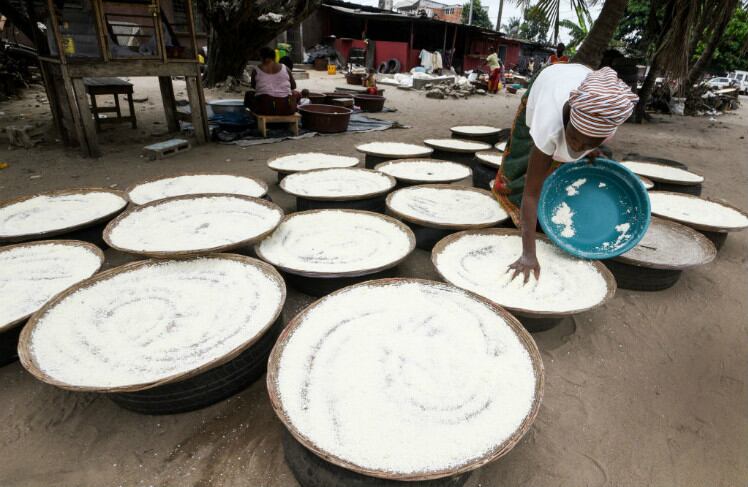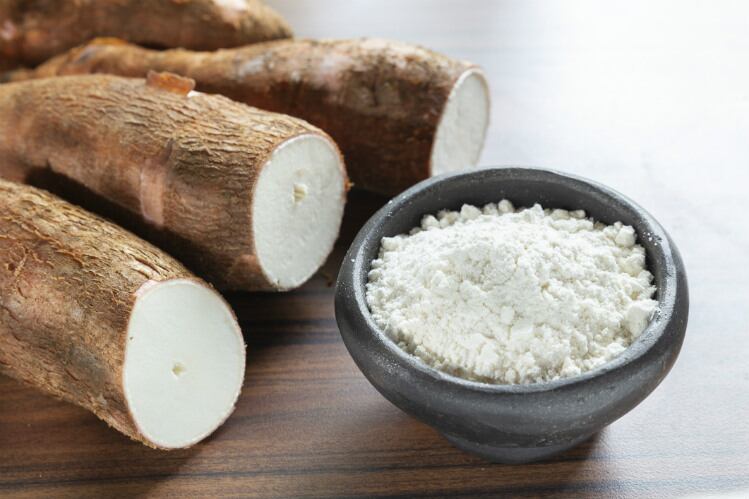AKFP introduced King Lion Cassava Flour in 2011, after more than a year of R&D to perfect the process to take this tuber from form to flour.
Indigenous to tropical climates including West Africa and South America, cassava is regularly milled into flour for everyday consumption – but those versions did not satisfy the end goals that AKFP had in mind, Mel Festejo, AKFP's COO, told BakeryandSnacks.
"We needed to work with a supplier who would collaborate with us to develop a new process which will yield that special version of cassava flour...suitable for the demands of the specialty market," he said, calling out gluten-free baking and extruded snacks.
"We partnered with a Brazilian company that not only invested in the manufacturing capability but also in securing raw material supply to ensure that growth, reliability and quality consistency became a reality."
AKFP first dug into this 'distinctive gluten-free and grain-free ingredient' eight years ago, with the long-term goal of finding a viable solution for the 'challenging, competitive' North American market.
Cassava v. Tapioca
Though the terms are sometimes used interchangeably, cassava flour differs from tapioca flour (also known as tapioca starch): Whereas the former is produced from grinding the tuber itself, tapioca is a starch extracted from the root through a process of washing and pulping.
Supply and demand
Cassava flour can achieve similar effects in baked goods – including in cookies and cakes – when combined with one or two other flours or starches. In pursuing a technique to create this naturally gluten-free flour, AKFP sought to produce a version that complemented wheat flours commonly used in North American baked goods.
AKFP claims its cassava flour ‘closely mimics’ the structure, texture and taste of wheat-based goods. Customers have successfully used the flour in cookies, cakes, tortillas, breads and pizza crusts, as well as puffed snacks, ‘without the need for complex ingredient formulations.’
As a notably hardy, drought-tolerant crop, said Festejo, "cassava is touted as a 21st century crop that is expected to be relatively resilient to climate change conditions."
“We now have an established track record for promptly and reliably delivering consistent quality cassava flour to an increasing customer base in the baking and snack segments. Thanks to a strong partnership with our manufacturing partner, our cassava flour is produced in a highly efficient and controlled environment and the production capacity has been boosted to cope with the rising demand.”
The 4th staple crop
The cassava (or yucca) plant is native to West Africa and the Congo basin, as well as tropical South American and Southeast Asia, according to the US Department of Agriculture (USDA). These regions produce about 160m tons of cassava per year – making it the world's fourth-largest staple crop.

It is a major source of calories in many developing countries thanks to its high levels of carbohydrates and energy.
Typically, the roots are cooked, steamed, fried or roasted either fresh or after drying or fermenting. (The USDA recommends peeling, boiling, grinding or drying the roots before consumption.)
Flour is produced from grinding the roots, which is used to make cookies, breads, pancakes, donuts, dumplings, muffins and bagels.
The plant withstands drought and low temperatures, proffering a halo of sustainability in dry climates. Nor does it require much maintenance: Farmers can dig up the roots six months to three years after planting. They also employ it as a shade crop on coffee, cocoa, rubber or oil palm plantations, or add it to animal feed.
On the downside, the tuber contains traces of cyanogenic glucosides, which can impart a bitter flavor and potentially be toxic in large quantities. Sweet cultivars contain less of these glucosides.
According to the United Nations’ Food and Agriculture Organization (FAO), cassava often forms the base of the much-maligned flavoring agent monosodium glutamate (MSG), which can also be made from molasses. And as a starch, it can act as a viable natural adhesive for products such as corrugated cardboard, remoistening gums in envelopes or postage stamps, and wallpaper.
Where has cassava flour landed?
As diets such as paleo, keto and gluten-free have proliferated, cassava flour has emerged as a go-to ingredient for snack brands.
For example, tortilla and chipmaker Siete, based in Austin, Texas, employs cassava flour in its ‘grain-free’ products.
Plant Snacks has built an entire brand based on a cassava root chip that omits other grains entirely. The company says it sources its flour from Brazil.
In the puffed snacks arena, Lesser Evil relies on cassava flour – as well as tapioca starch, tapioca solids and coconut flour – as a base ingredient.
The flour has also emerged on natural store shelves from brands including Otto’s Naturals and Bob’s Red Mill.
One serving of cassava flour provides nearly 80g of carbs, plus 1.6g of protein and 11.9g of fiber; however, it also contains 417mg of sodium – nearly a third of the daily recommended value, as per the American Heart Association.
Festejo contends that the flour has legs beyond gluten-free bakery applications and extruded snacks.
"The emergence of the grain-free [and] paleo segments in both human and pet food markets [in recent years] lifted the visibility of cassava flour as a choice baking and snack ingredient because fewer clours come from non-grain or non-cereal sources," he told us.
The market for cassava snacks will grow, he added, "as more consumers become aware of cassava and its innate, desire free-from properties."

